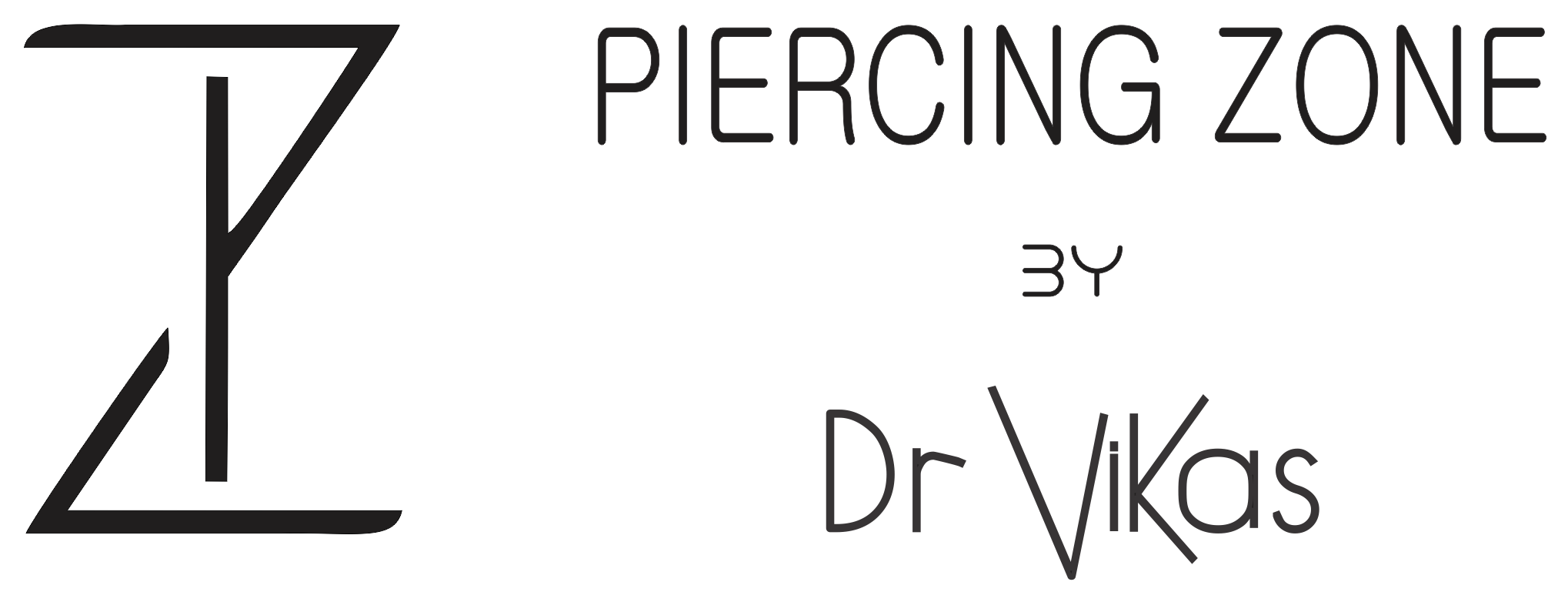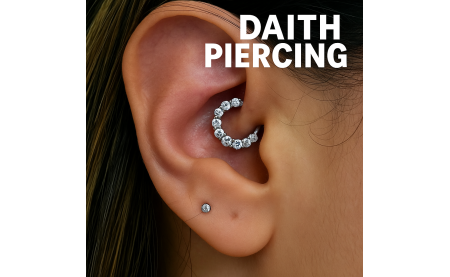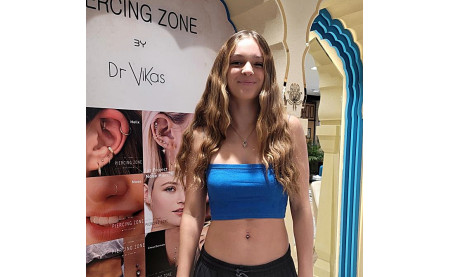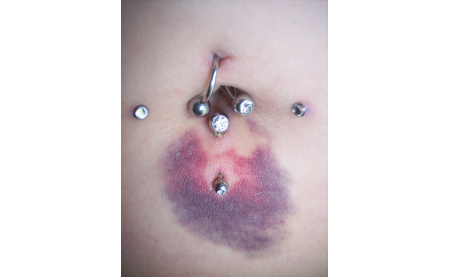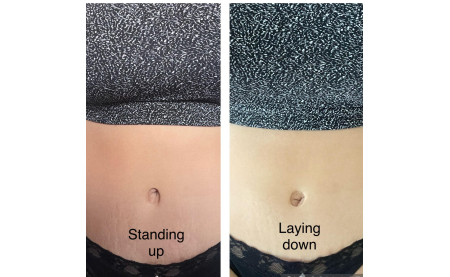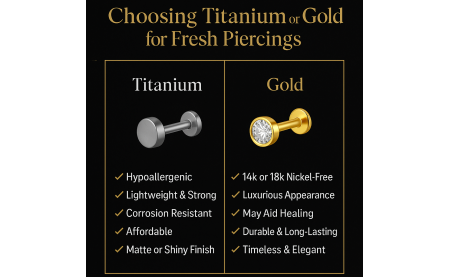Why We Do Not Offer Dermal Piercings on the Neck
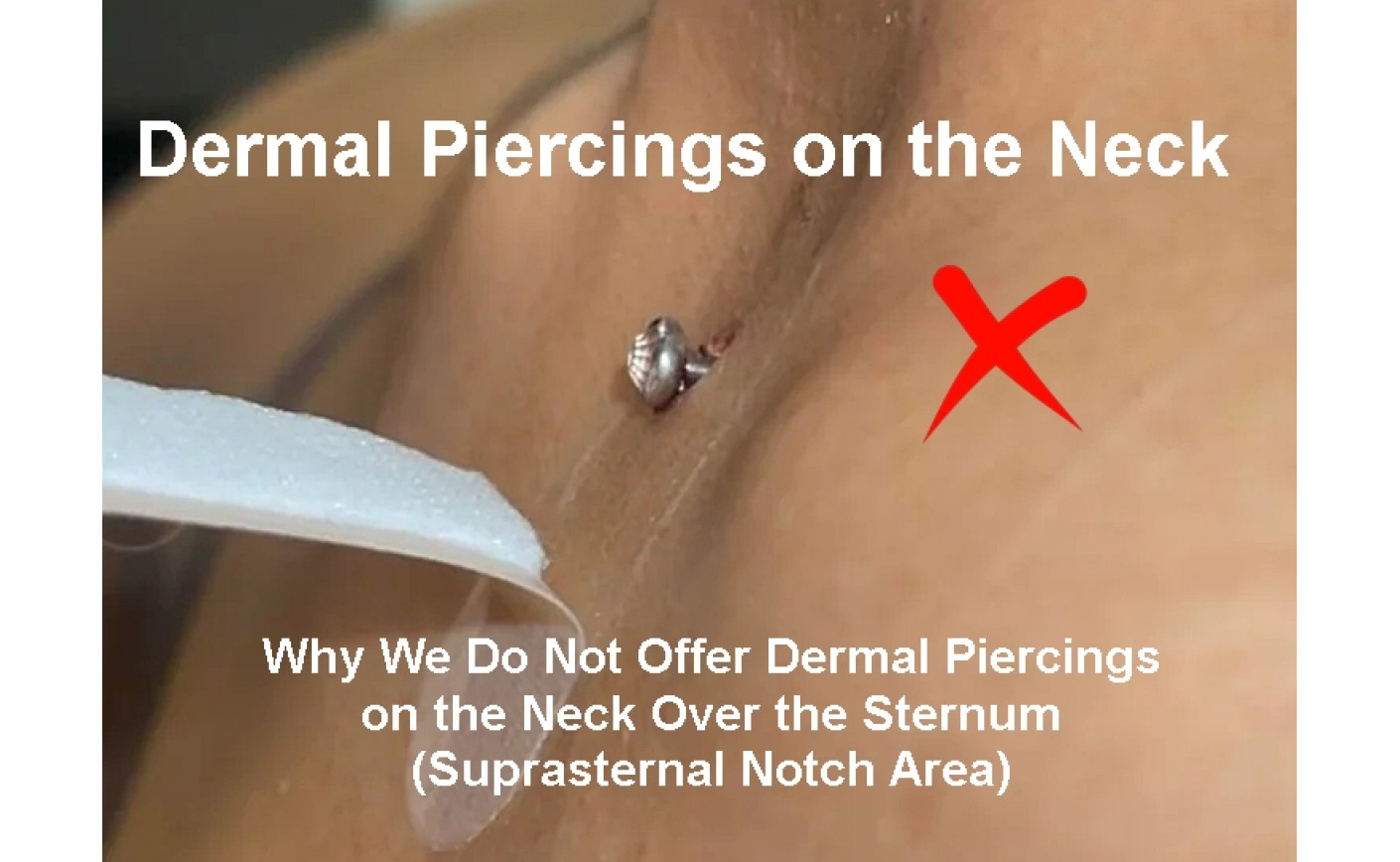
At Piercing Zone by Dr. Vikas, client safety is not negotiable. While dermal piercings may seem appealing for areas like the center of the chest near the neck, specifically the suprasternal notch (jugular notch)—the dip between the clavicles just above the manubrium of the sternum—we strongly advise against this placement and do not perform dermal implants in this region.
This decision is based on anatomical, physiological, and clinical reasoning, grounded in over a decade of piercing expertise and aligned with international best practices in body modification.
Understanding the Anatomy: A High-Risk Zone
The area in question lies directly over the:
- Suprasternal notch (jugular notch) – the visible hollow between the clavicles.
- Manubrium – the uppermost section of the sternum (breastbone).
- Surrounded by thin cutaneous tissue, minimal subcutaneous fat, and dense fascial layers closely adhered to underlying osseous (bony) structures.
Additionally, this area is a central location for multiple vital anatomical structures, including:
- Internal jugular vein
- Trachea (windpipe)
- Thyroid gland isthmus
- Subclavian vessels and sternocleidomastoid muscle insertions
All these structures lie within centimeters beneath the skin—making the area medically sensitive and non-ideal for any form of dermal anchoring.
Clinical Risks and Medical Concerns
1. Lack of Adequate Soft Tissue for Anchoring
- Successful dermal implants require sufficient dermal thickness and stable subcutaneous tissue to embed the base (anchor).
-
The suprasternal notch has thin, mobile skin over a bony surface with minimal adipose padding, leading to:
- Poor integration of the implant
- Constant surface tension
- Increased mechanical stress
This dramatically increases the chances of:
- Dermal extrusion (implant being pushed out of the body)
- Migration (anchor shifting under the skin)
- Acute rejection within weeks
2. High Mobility & Mechanical Trauma
- The neck and chest base are high-movement anatomical zones—involved in nearly every head, shoulder, or respiratory action.
- The sternocleidomastoid and platysma muscles, as well as clavicular elevation, exert constant mechanical tension on the area.
-
The dermal piercing is subjected to:
- Skin stretching and folding
- Friction from clothing, seat belts, necklaces
- Compression during sleep or head tilts
These motions prevent proper stabilization and healing, and significantly increase the risk of chronic inflammation or implant displacement.
3. Vascular and Infection Risk
- The suprasternal notch lies above major vascular structures like the jugular veins and subclavian arteries.
-
An improperly placed dermal anchor can lead to:
- Local infection spreading through rich vascular networks (risk of cellulitis or superficial thrombophlebitis)
- Deeper infection pathways due to fascial continuity to mediastinum (in rare cases, leading to mediastinitis, a potentially life-threatening condition)
- The thin epidermis and lack of underlying muscle make the area more susceptible to microtears, delayed healing, and bacterial colonization.
4. High Scar and Keloid Potential
- The chest, especially in individuals with Fitzpatrick Skin Type IV–VI, is prone to hypertrophic scarring and keloid formation.
-
Once the dermal piercing begins to reject or is removed, the fibroblastic response often results in:
- Raised, thickened scars
- Long-lasting pigmentation changes
- Cosmetic dissatisfaction
5. Poor Long-Term Prognosis
Even if the initial healing appears normal:
-
There’s a very high likelihood of future complications due to:
- Subdermal tissue breakdown
- Anchor shift during physical exertion
- Tissue thinning over time
- Studies and anecdotal reports from professional piercers globally confirm extremely low success and retention rates in this area compared to dermals on flat, muscular, or fatty regions (like the cheekbone, hip, or upper chest away from midline).
Our Ethical Stance
We firmly believe that aesthetic trends must never override medical safety.
Performing a dermal piercing on the suprasternal notch would violate the core principles of:
- Informed, ethical practice
- Anatomical respect
- Client-centered safety
We are happy to suggest alternative, medically suitable dermal placements that can offer a similar visual appeal without compromising tissue health or healing potential.
✅ Safe Alternatives We Recommend
If you're inspired by the look of a center chest dermal, we can guide you toward:
- Higher sternum dermals (above the breast, away from notch)
- Clavicle area dermals (with sufficient fat tissue)
- Upper chest surface bars (where skin tension is lower and healing is better)
- Or even jewelry-enhanced tattoos or body art for a similar aesthetic
